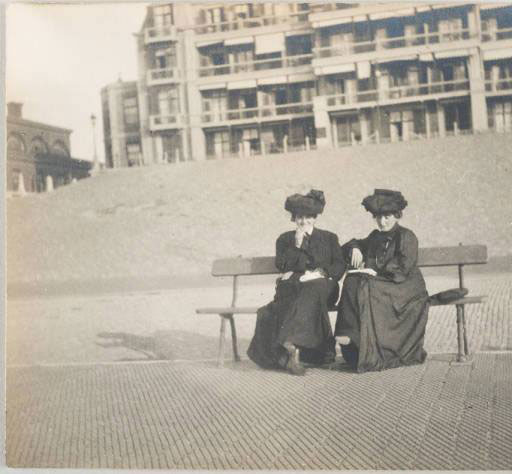The Cone Collection

Etta Cone and Claribel Cone at the beach in Scheveningen, Holland, circa August 27-30, 1903. Claribel Cone and Etta Cone Papers, Archives and Manuscripts Collections, The Baltimore Museum of Art. CG.11
The internationally renowned Cone Collection is the crown jewel of the BMA. In the early 20th century, Baltimore sisters Claribel and Etta Cone visited the Paris studios of Henri Matisse and Pablo Picasso and began amassing an exceptional collection of approximately 3,000 objects, which were displayed in their Baltimore apartments prior to coming to the Museum.
The highlight of the Cone Collection is 500 Matisse works given to the Museum in 1949 as well as masterpieces by Paul Cézanne, Paul Gauguin, and Vincent van Gogh. To date, the Museum as acquired more than 1,000 works by Matisse, the largest public holding of his works in the world.
The Cone Sisters also collected a variety of textiles, jewelry, furniture, and African, Asian, and Near Eastern art.
"My Two Baltimore Ladies"
In 1898, Etta Cone began collecting art with the purchase of five paintings by American Impressionist Theodore Robinson to decorate her family home.
Supported financially by the successful Cone textile business, Claribel and Etta made annual trips to Europe to purchase art. They often visited avant-garde writer Gertude Stein and her brother Leo in Paris, and through them became acquainted with a wide circle of artists, musicians, and writers who would influence their collecting.
In 1906, Etta Cone met Matisse who later fondly referred to Etta and Claribel as "my two Baltimore ladies."
Etta's initial purchase of several drawings marked the beginning of a life-long passion for Matisse's art. Among the artist’s first patrons, the Cone sisters collected throughout his entire career 42 oil paintings, 18 sculptures, 36 drawings, 155 prints, and seven illustrated books, as well as 250 drawings, prints, and copper plates from the artist’s first illustrated book, Poésies de Stéphane Mallarmé. The sisters also acquired 114 works by Picasso, including an important group of prints and drawings from the artist’s early years in Barcelona to his Rose period in Paris (1905–1906.)
The Cone Collection grew to include such masterworks as Matisse’s iconic Blue Nude (1907) and Large Reclining Nude (1935), Paul Cézanne’s Mont Sainte-Victoire Seen from the Bibémus Quarry (c. 1897), Paul Gauguin’s Vahine no te vi (Woman of the Mango) (1892), and Pablo Picasso’s Mother and Child (1922).
During their extensive travels, the Cone sisters also purchased important works by American artists; more than 1,000 prints and drawings and illustrated books; a large group of textiles; jewelry, furniture, and other decorative arts; African art, Japanese prints; and antique ivories and bronzes.
Bringing the Cone Collection to The Baltimore Museum of Art
Competition among museums for The Cone Collection began as early as 1940, but Claribel insisted that it go to The Baltimore Museum of Art if “the spirit of appreciation for modern art in Baltimore became improved.” Thus achieved, the collection came to the BMA upon Etta Cone’s death in 1949, and has been on view in the BMA’s Cone Wing since 1957.